Diverse targets of SMN2-directed splicing-modulating small molecule therapeutics for spinal muscular atrophy
- PMID: 37026480
- PMCID: PMC10325915
- DOI: 10.1093/nar/gkad259
Diverse targets of SMN2-directed splicing-modulating small molecule therapeutics for spinal muscular atrophy
Abstract
Designing an RNA-interacting molecule that displays high therapeutic efficacy while retaining specificity within a broad concentration range remains a challenging task. Risdiplam is an FDA-approved small molecule for the treatment of spinal muscular atrophy (SMA), the leading genetic cause of infant mortality. Branaplam is another small molecule which has undergone clinical trials. The therapeutic merit of both compounds is based on their ability to restore body-wide inclusion of Survival Motor Neuron 2 (SMN2) exon 7 upon oral administration. Here we compare the transcriptome-wide off-target effects of these compounds in SMA patient cells. We captured concentration-dependent compound-specific changes, including aberrant expression of genes associated with DNA replication, cell cycle, RNA metabolism, cell signaling and metabolic pathways. Both compounds triggered massive perturbations of splicing events, inducing off-target exon inclusion, exon skipping, intron retention, intron removal and alternative splice site usage. Our results of minigenes expressed in HeLa cells provide mechanistic insights into how these molecules targeted towards a single gene produce different off-target effects. We show the advantages of combined treatments with low doses of risdiplam and branaplam. Our findings are instructive for devising better dosing regimens as well as for developing the next generation of small molecule therapeutics aimed at splicing modulation.
© The Author(s) 2023. Published by Oxford University Press on behalf of Nucleic Acids Research.
Figures

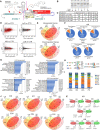
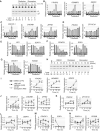
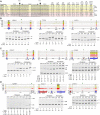

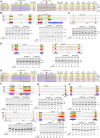
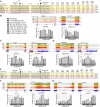

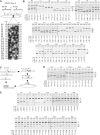


Comment in
-
Synergistic Effect of an Antisense Oligonucleotide and Small Molecule on Splicing Correction of the Spinal Muscular Atrophy Gene.Neurosci Insights. 2024 Feb 19;19:26331055241233596. doi: 10.1177/26331055241233596. eCollection 2024. Neurosci Insights. 2024. PMID: 38379891 Free PMC article.
Similar articles
-
Risdiplam: an investigational survival motor neuron 2 (SMN2) splicing modifier for spinal muscular atrophy (SMA).Expert Opin Investig Drugs. 2022 May;31(5):451-461. doi: 10.1080/13543784.2022.2056836. Epub 2022 Apr 11. Expert Opin Investig Drugs. 2022. PMID: 35316106 Review.
-
Discovery of a CNS penetrant small molecule SMN2 splicing modulator with improved tolerability for spinal muscular atrophy.Sci Rep. 2020 Oct 15;10(1):17472. doi: 10.1038/s41598-020-74346-9. Sci Rep. 2020. PMID: 33060681 Free PMC article.
-
hnRNP M facilitates exon 7 inclusion of SMN2 pre-mRNA in spinal muscular atrophy by targeting an enhancer on exon 7.Biochim Biophys Acta. 2014;1839(4):306-15. doi: 10.1016/j.bbagrm.2014.02.006. Epub 2014 Feb 15. Biochim Biophys Acta. 2014. PMID: 24533984
-
Oxidative Stress Triggers Body-Wide Skipping of Multiple Exons of the Spinal Muscular Atrophy Gene.PLoS One. 2016 Apr 25;11(4):e0154390. doi: 10.1371/journal.pone.0154390. eCollection 2016. PLoS One. 2016. PMID: 27111068 Free PMC article.
-
Advances in therapeutic development for spinal muscular atrophy.Future Med Chem. 2014 Jun;6(9):1081-99. doi: 10.4155/fmc.14.63. Future Med Chem. 2014. PMID: 25068989 Free PMC article. Review.
Cited by
-
Targeting STMN2 for neuroprotection and neuromuscular recovery in Spinal Muscular Atrophy: evidence from in vitro and in vivo SMA models.Cell Mol Life Sci. 2024 Dec 27;82(1):29. doi: 10.1007/s00018-024-05550-3. Cell Mol Life Sci. 2024. PMID: 39725771 Free PMC article.
-
Patient-specific responses to SMN2 splice-modifying treatments in spinal muscular atrophy fibroblasts.Mol Ther Methods Clin Dev. 2024 Nov 13;32(4):101379. doi: 10.1016/j.omtm.2024.101379. eCollection 2024 Dec 12. Mol Ther Methods Clin Dev. 2024. PMID: 39655308 Free PMC article.
-
Specificity, synergy, and mechanisms of splice-modifying drugs.Nat Commun. 2024 Feb 29;15(1):1880. doi: 10.1038/s41467-024-46090-5. Nat Commun. 2024. PMID: 38424098 Free PMC article.
-
Exploration of adverse events associated with risdiplam use: Retrospective cases from the US Food and Drug Administration Adverse Event Reporting System (FAERS) database.PLoS One. 2024 Mar 1;19(3):e0298609. doi: 10.1371/journal.pone.0298609. eCollection 2024. PLoS One. 2024. PMID: 38427665 Free PMC article.
-
Splice modulators target PMS1 to reduce somatic expansion of the Huntington's disease-associated CAG repeat.Nat Commun. 2024 Apr 12;15(1):3182. doi: 10.1038/s41467-024-47485-0. Nat Commun. 2024. PMID: 38609352 Free PMC article.
References
-
- Wirth B., Karakaya M., Kye M.J., Mendoza-Ferreira N.. Twenty-five years of spinal muscular atrophy research: from phenotype to genotype to therapy, and what comes next. Annu. Rev. Genomics Hum. Genet. 2020; 21:231–261. - PubMed
Publication types
MeSH terms
Substances
Grants and funding
LinkOut - more resources
Full Text Sources
Medical
Research Materials

